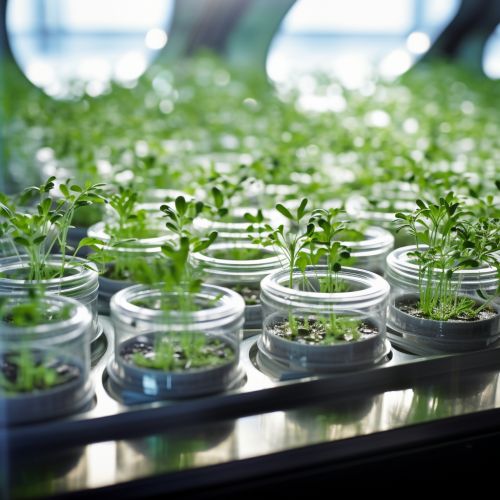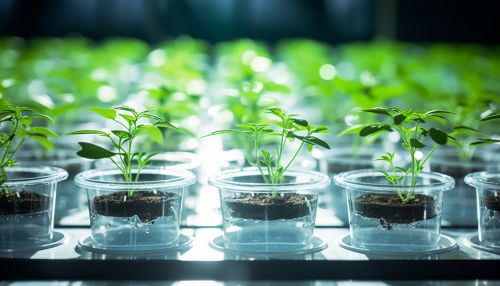Micropropagation
Introduction
Micropropagation is a specialized form of propagation that involves the growth of plant tissues in a controlled, sterile environment. This technique is widely used in horticulture and forestry to produce large numbers of identical plants, or clones, from a single parent plant. Micropropagation is particularly useful for propagating plants that do not produce seeds, or have a slow rate of natural propagation.
Principles of Micropropagation
Micropropagation relies on the principle of totipotency, which is the ability of a single cell to divide and produce all of the differentiated cells in an organism, including extraembryonic tissues. Totipotency is a fundamental property of plant cells, and it is this characteristic that allows for the development of an entire plant from a single cell or group of cells.


Process of Micropropagation
The process of micropropagation involves several stages, each with specific requirements for the successful growth and development of the plant tissues.
Stage One: Initiation
The first stage of micropropagation is initiation, where the explant (a piece of plant tissue) is prepared for culture. This involves sterilization of the explant to remove any surface contaminants, followed by the introduction of the explant into a culture medium. The culture medium is a nutrient-rich solution that provides the necessary elements for plant growth, including sugars, vitamins, and plant hormones.
Stage Two: Multiplication
The second stage is multiplication, where the explant is induced to produce new shoots or buds. This is typically achieved through the addition of plant hormones to the culture medium, such as cytokinins, which promote cell division and bud formation. The new shoots can then be separated and cultured individually to produce more plants.
Stage Three: Rooting
The third stage is rooting, where the newly formed shoots are induced to produce roots. This is usually achieved by transferring the shoots to a new culture medium containing different plant hormones, such as auxins, which promote root formation. Once the roots have developed, the plantlets can be transferred to soil for further growth.
Stage Four: Acclimatization
The final stage is acclimatization, where the plantlets are gradually adapted to the outside environment. This involves transferring the plantlets from the sterile culture medium to soil, and gradually reducing the humidity levels to allow the plants to adapt to their new environment.
Applications of Micropropagation
Micropropagation has a wide range of applications in various fields, including horticulture, forestry, and plant breeding.
In horticulture, micropropagation is used to produce large numbers of identical plants for commercial sale. This is particularly useful for plants that are difficult to propagate by other means, such as orchids and other ornamental plants.
In forestry, micropropagation is used to produce large numbers of trees for reforestation efforts. This is especially important for endangered tree species that have a low rate of natural propagation.
In plant breeding, micropropagation is used to rapidly multiply new plant varieties. This allows breeders to quickly produce large numbers of plants for testing and evaluation.
Advantages and Disadvantages of Micropropagation
Like any other technique, micropropagation has its advantages and disadvantages.
Advantages
One of the main advantages of micropropagation is the ability to produce large numbers of identical plants. This is particularly useful for commercial growers, who require uniformity in their plant products.
Another advantage is the speed at which plants can be produced. Micropropagation is much faster than traditional propagation methods, such as seed propagation or cuttings.
Micropropagation also allows for the propagation of plants that are difficult to propagate by other means. This includes plants that do not produce seeds, or have a slow rate of natural propagation.
Disadvantages
One of the main disadvantages of micropropagation is the cost. The equipment and materials required for micropropagation can be expensive, and the process requires a high level of skill and expertise.
Another disadvantage is the risk of contamination. Because micropropagation involves the growth of plant tissues in a sterile environment, there is a high risk of contamination from bacteria, fungi, and viruses.
